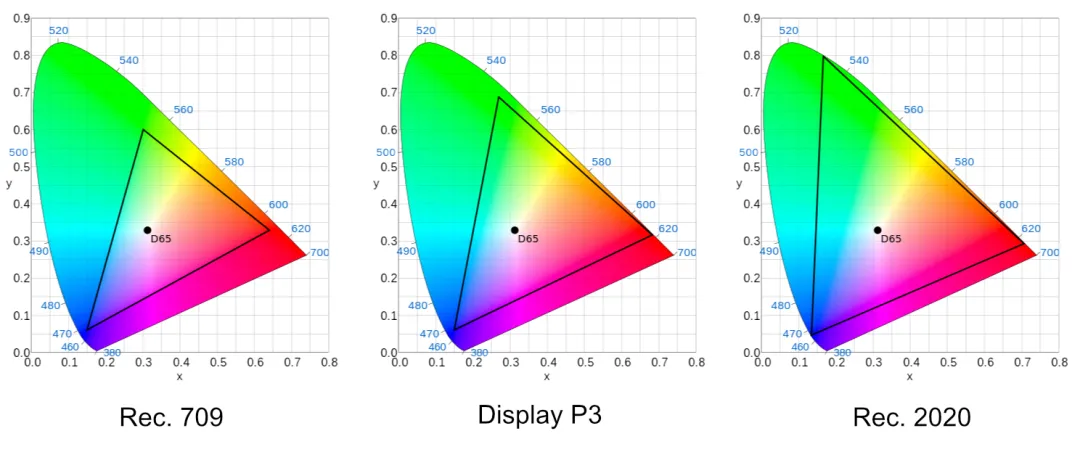探索 Metal 音视频技术(7):使用 AVFoundation 与 Metal 渲染 HDR 视频
本文将介绍使用 AVFoundation 与 Metal 渲染 HDR 视频。
探索 Metal 音视频技术(7):使用 AVFoundation 与 Metal 渲染 HDR 视频
想要学习和提升音视频技术的朋友,快来加入我们的【音视频技术社群】,加入后你就能:
- 1)下载 30+ 个开箱即用的「音视频及渲染 Demo 源代码」
- 2)下载包含 500+ 知识条目的完整版「音视频知识图谱」
- 3)下载包含 200+ 题目的完整版「音视频面试题集锦」
- 4)技术和职业发展咨询 100% 得到回答
- 5)获得简历优化建议和大厂内推
现在加入,送你一张 20 元优惠券:点击领取优惠券
这个系列文章我们来探索 Metal 音视频技术,对于想要开始学习音视频技术的朋友,这些文章是份不错的入门资料,本篇介绍使用 AVFoundation 与 Metal 渲染 HDR 视频。
- HDR(High Dynamic Range)指动态范围与亮度超出传统 SDR(≈100 nits)的内容、格式与显示设备。
- 2010 年代中期起,HDR 电视与内容同步普及,如今大多数智能手机亦能拍摄 HDR 照片/视频。
- 早期 HDR 渲染需将高动态范围值“色调映射(tonemapping)”到 SDR 范围,此过程会丢失高光细节。
- 现代 HDR 显示虽大幅进步,但仍无法完全还原太阳等高亮光源与极黑之间的对比,因此色调映射依旧是管线必要环节。
1、什么是 EDR?
- EDR(Extended Dynamic Range)并非格式,而是 Apple 平台用于自适应展示 HDR 内容的一套技术与色彩管理方式。
- 类似于色彩管理系统:
- 通过设置
CAMetalLayer.colorspace告知系统内容的真实色域; - EDR 进一步根据当前显示能力与亮度设置实时调整 HDR 值的呈现。
- 通过设置
- 支持从 100 nits 的传统 SDR 到 1600 nits 的 Pro Display XDR 等各种显示器。
- EDR headroom(余量)= 当前显示器可呈现的最大亮度 / SDR 参考白(1.0)。该值随环境光与用户调节动态变化。
- 在 EDR 语境下:
- 1.0 表示 SDR 纯白, > 1.0 表示高光/发光体,可远高于 1.0。
2、色彩空间
- 色彩空间 = { 白点、RGB 三原色、传递函数(EOTF) }。
- sRGB:1999 定标准,覆盖 <40% 人眼可见色域。
- Display P3:Apple 将 DCI-P3 原色与 D65 白点、sRGB 传递函数结合,成为 Apple 设备首选。
- Rec. 2020:HDR 视频常用,色域远大于 P3。
- HDR 需要新的传递函数:
- HLG(Hybrid Log-Gamma):兼容 SDR,高光部分平滑滚降;
- PQ(Perceptual Quantizer):HDR10、Dolby Vision 使用,绝对亮度编码。
3、使用 AVPlayer 播放视频
- 高阶播放:
1
2
3
4
let asset = AVURLAsset(url: url)
let playerItem = AVPlayerItem(asset: asset)
let player = AVPlayer(playerItem: playerItem)
player.play()
- 检测 HDR:
1
let hdrTracks = try await asset.loadTracks(withMediaCharacteristic: .containsHDRVideo)
4、获取视频帧:AVPlayerItemVideoOutput
- 通过
AVPlayerItemVideoOutput在播放时“截取”视频帧。 目标 Metal 纹理格式:
.rgba16Float(半浮点,线性 HDR)。- 配置示例:
1
2
3
4
5
6
7
8
9
10
11
12
let videoColorProperties: [String: Any] = [
AVVideoColorPrimariesKey: AVVideoColorPrimaries_ITU_R_2020,
AVVideoTransferFunctionKey: AVVideoTransferFunction_Linear,
AVVideoYCbCrMatrixKey: AVVideoYCbCrMatrix_ITU_R_2020
]
let outputSettings: [String: Any] = [
AVVideoAllowWideColorKey: true,
AVVideoColorPropertiesKey: videoColorProperties,
kCVPixelBufferPixelFormatTypeKey as String: NSNumber(value: kCVPixelFormatType_64RGBAHalf)
]
let videoOutput = AVPlayerItemVideoOutput(outputSettings: outputSettings)
playerItem.add(videoOutput)
- 在
MTKView.draw()中定时拉取:
1
2
3
4
let itemTime = videoOutput.itemTime(forHostTime: CACurrentMediaTime())
guard videoOutput.hasNewPixelBuffer(forItemTime: itemTime),
let pixelBuffer = videoOutput.copyPixelBuffer(forItemTime: itemTime, itemTimeForDisplay: nil)
else { return }
5、从 CVPixelBuffer 到 Metal Texture
使用
CVMetalTextureCache避免手动拷贝。创建缓存:
1
2
var textureCache: CVMetalTextureCache!
CVMetalTextureCacheCreate(nil, nil, device, nil, &textureCache)
- 获取纹理:
1
2
3
4
5
6
7
let width = CVPixelBufferGetWidth(pixelBuffer)
let height = CVPixelBufferGetHeight(pixelBuffer)
var cvTexture: CVMetalTexture?
CVMetalTextureCacheCreateTextureFromImage(
nil, textureCache, pixelBuffer, nil,
.rgba16Float, width, height, 0, &cvTexture)
let frameTexture = CVMetalTextureGetTexture(cvTexture!)
- 需保持
CVMetalTexture强引用直至 Metal 命令完成,防止资源过早回收。
6、配置 CAMetalLayer 以支持 EDR
1
2
3
metalLayer.wantsExtendedDynamicRangeContent = true
metalLayer.colorspace = CGColorSpace(name: CGColorSpace.extendedLinearITUR_2020)
metalLayer.pixelFormat = .rgba16Float
7、色调映射(Tonemapping)
7.1、使用系统 EDR 色调映射
- 若视频包含 HDR10/HLG 元数据,可通过
CVBufferCopyAttachment提取:
1
2
3
let mastering = CVBufferCopyAttachment(imageBuffer, kCVImageBufferMasteringDisplayColorVolumeKey, nil)
let cll = CVBufferCopyAttachment(imageBuffer, kCVImageBufferContentLightLevelInfoKey, nil)
let ambient = CVBufferCopyAttachment(imageBuffer, kCVImageBufferAmbientViewingEnvironmentKey, nil)
- 生成
CAEDRMetadata并赋值:
1
2
3
4
5
6
7
8
9
if let mastering, let cll {
let metadata = CAEDRMetadata.hdr10(displayInfo: mastering,
contentInfo: cll,
opticalOutputScale: 100.0)
metalLayer.edrMetadata = metadata
} else if let ambient {
let metadata = CAEDRMetadata.hlg(ambientViewingEnvironment: ambient)
metalLayer.edrMetadata = metadata
}
- 若无元数据,可设定默认 EDR 元数据避免过曝。
7.2、自定义 Metal Shader 色调映射
- 场景:离屏渲染或需要自定义管线时。
- 步骤:
- 将 PQ/HLG 解码到线性 Rec.2020;
- 应用 Reinhard/MaxRGB 曲线映射到 EDR headroom;
- 输出线性值供后续处理或直接显示。
7.2.1、PQ → EDR 示例(Metal 着色器)
1
2
3
4
5
6
7
8
9
10
11
12
13
14
15
16
17
18
// PQ EOTF -> nits
float3 pq_eotf(float3 v) {
const float m1 = 0.1593017578125f;
const float m2 = 78.84375f;
const float c1 = 0.8359375f;
const float c2 = 18.8515625f;
const float c3 = 18.6875f;
float3 vp = pow(abs(v), float3(1.0f / m2));
return 10000.0f * pow(max(vp - c1, 0.0f) / (c2 - c3 * vp), float3(1.0f / m1));
}
// 简单 Reinhard tonemapping
float3 tonemap_maxrgb(float3 rgb, float maxLum, float headroom) {
float maxC = max(rgb.r, max(rgb.g, rgb.b));
if (maxC <= maxLum) return rgb * (headroom / maxLum);
float scale = headroom * maxC / (maxC + headroom * (maxC - maxLum));
return rgb * scale / maxC;
}
7.2.2、HLG → EDR 示例
- 反 OETF → 相对线性光;
- OOTF → 名义亮度;
- 按 HLG 峰值白与 SDR 参考白比例缩放;
- 使用同一 maxRGB 曲线 tonemapping。
8、总结
本文展示了如何在 Metal 中摄取并正确渲染 HDR 视频:
- 利用 AVFoundation + Core Video解码并获取帧;
- 借助 CVMetalTextureCache零拷贝生成 Metal 纹理;
- 通过 EDR 元数据或 自定义着色器完成色调映射;
- 适配 macOS/iOS 不同显示能力与亮度设置。
希望对你的 HDR 视频项目有所帮助!
本文转自微信公众号
关键帧Keyframe,推荐您关注来获取音视频、AI 领域的最新技术和产品信息:你还可以加入我们的微信群和更多同行朋友来交流和讨论:
本文由作者按照 CC BY-NC-ND 4.0 进行授权



